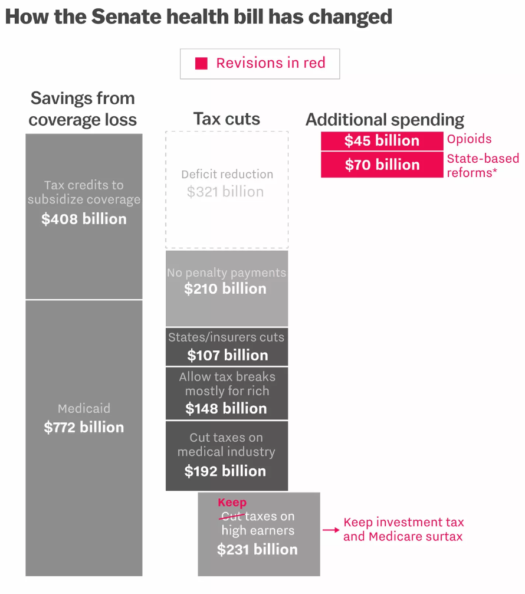Just how low can the GOP go?
Just when you think the GOP cannot get any lower, we read this:
The 401(k) simply defers taxes, it doesn’t exempt them. According to the Tax Foundation, a nonpartisan think tank, this half-trillion figure “does not represent taxes that will never be paid. Instead, it represents taxes that will be paid at a future time, when individuals retire.”
“The revenue will have to be found in the future,” Olivia Mitchell, a professor at the Wharton School and executive director of the Pension Research Council, told Yahoo Finance. “It’s robbing Peter to pay Paul.” . . .
“It’s essentially an accounting gimmick,” said Mitchell . . . Marc Goldwein also called it a “budgetary gimmick.”
“Roths are a worse deal for the federal government — probably more revenue is lost,” he told Yahoo Finance. “So if anything, switching from traditional tax-deferred plans to Roth IRAs is probably a long-term loss.”
So the GOP wants to move hundreds of billions in future tax revenue (which will be sorely needed due to the retirement of boomers) up to the present, to provide a fig leaf for their incredibly irresponsible plans to balloon the national debt. Wonderful.
They claim they’ll replace 401ks with Roths, but:
A shift to Roths from traditional vehicles may present a further fiscal problem in the future. Mitchell believes that taxes will have to rise in the future, potentially erasing Roths’s tax-free withdrawal.
“With population aging and longer lifetimes we’re not going to be able to keep the promise to have Roths not be taxed in retirement,” she said. “I think it’s going to get more difficult to protect.”
Wait, you mean future governments might not honor their promises? Um, yes:
Politicians from both parties have tried to scale back the 401(k) system. Former President Barack Obama proposed a cap on 401(k) balances of $3.4 million in 2015.
Over at Econlog, I praised Trump for taking a firm stand against any cuts in 401ks. It took only two days for that to be exposed as another one of Trump’s unending series of lies:
After Trump tweeted that “There will be NO change to your 401(k)” on Oct. 23, Trump then told reporters two days later, “Well, maybe it is [on the table], and maybe we’ll use it as negotiating.”
Speaking of lies, the White House informs us that all 16 of the women who accused Trump of sexual harassment are lying. Every last one of them. That’s a relief. For a moment there I was worried that we had a Harvey Weinstein in the White House.
PS. Suppose the Financial Times said, “Ohio State’s come from behind victory over Penn State shows the need for higher interest rates.” How would you react? Scratch your head a bit? Then how do you react to this FT headline:
Billionaire boom is a sign that rates need to rise
Nowhere in the article does the author tell us whether these higher rates are to be generated with an easy money policy (as in the 1960s) or a tight money policy. What scares me the most is that I suspect they don’t even understand the question.
Can we have at least one media outlet that is not clueless about monetary policy? (I suppose the National Review is best.) For the Nth time, interest rates are not a policy; they are the effect of various alternative policies.
HT: Stephen Kirchner


